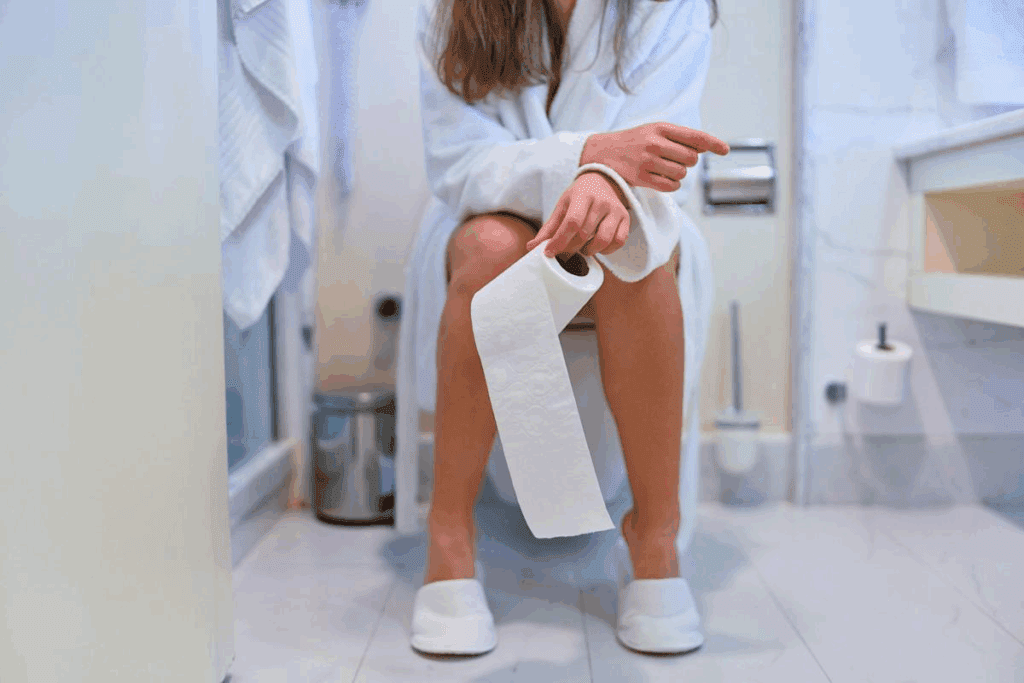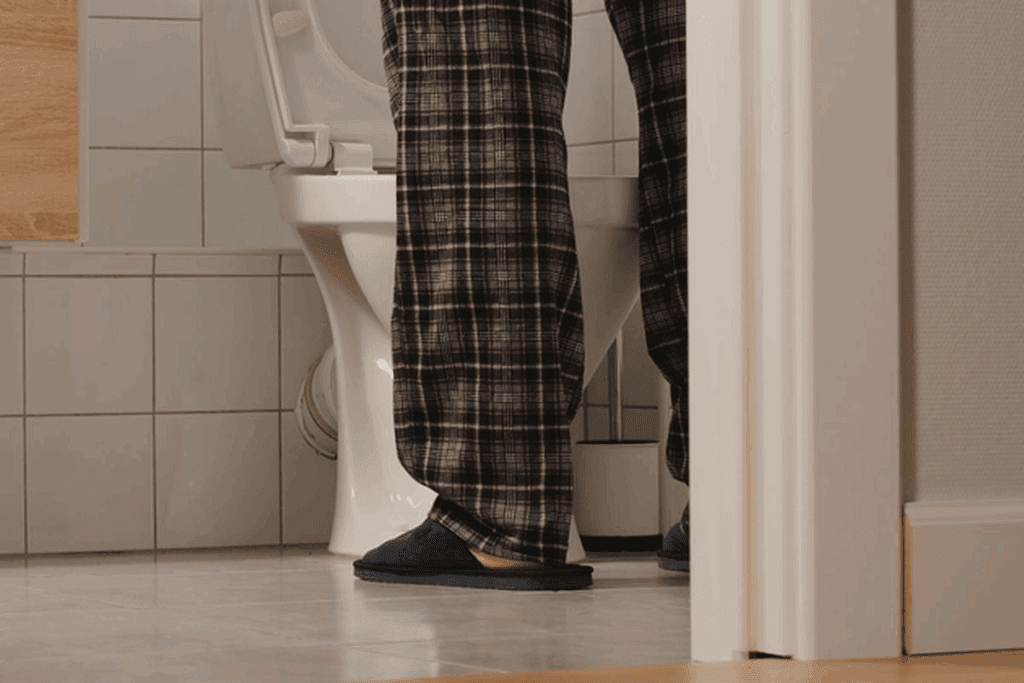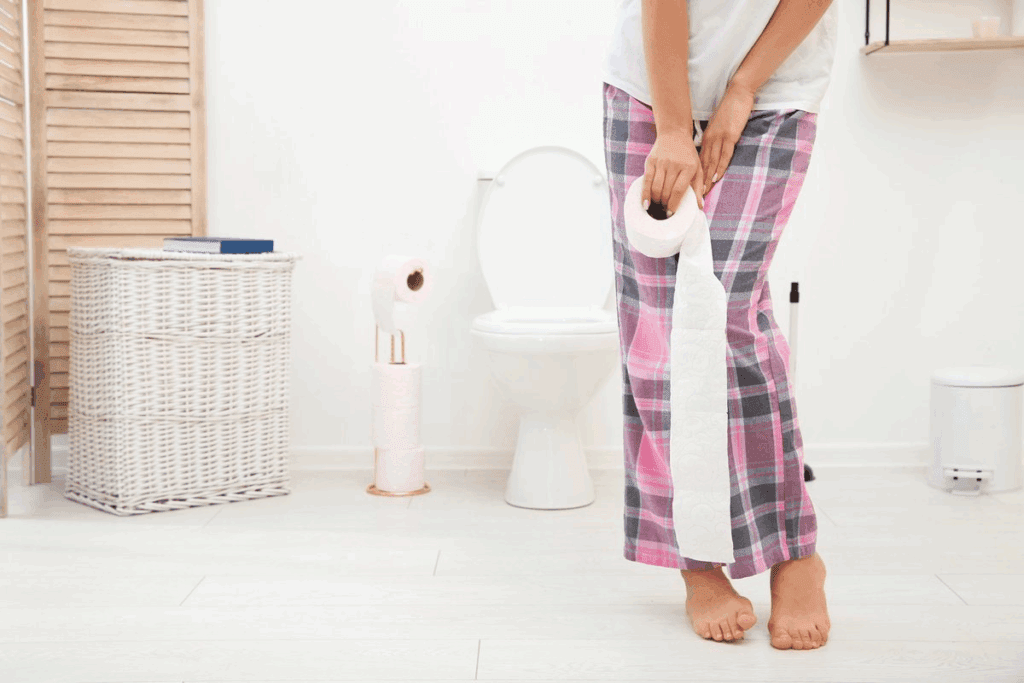Last Updated on November 25, 2025 by Ugurkan Demir

Discover what is urge incontinence and common causes of urgent urinary leakage.
Feeling a sudden, strong urge to urinate that leads to leakage before you can get to the bathroom is called urge incontinence. At Liv Hospital, we know how hard this condition can be. It affects your quality of life, causing a lot of distress and discomfort. We’re here to help, providing all the care and support you need.
Urge incontinence, also known as urgency incontinence or urge urinary incontinence, is when you have a sudden, strong urge to urinate. This urge is followed by involuntary urine leakage. Medical sources say an overactive bladder can cause these sudden urges. These urges can be hard to control, leading to urgency incontinence.

Urge incontinence is when you can’t hold your urine and feel a strong urge to go. It’s when you leak urine suddenly because you really need to go. This happens because of a strong urge to urinate.
Urge incontinence is when you leak urine suddenly and feel a strong need to go. Doctors say it’s a big part of overactive bladder syndrome. This is when your bladder muscles contract without you wanting them to, making you feel like you need to go right away.
The International Continence Society says urge incontinence is when you leak urine suddenly and feel a strong urge. This shows how urgent it is and how it affects your life.
Urge incontinence is different from other types like stress incontinence. Stress incontinence happens when you move and pressure hits your bladder. But urge incontinence is about the sudden, strong urge to urinate.
Knowing the difference is key for the right treatment. Stress incontinence might need exercises or surgery. But urge incontinence might need different treatments like behavior changes, medicine, or new therapies.
Healthcare providers can make better plans by understanding urge incontinence. This way, they can help people with this condition better.

The bladder stores urine from the kidneys through the ureters. When it’s full, it sends a signal to the brain. The brain then tells the bladder to contract and release urine through the urethra. This is a complex process involving both voluntary and involuntary muscle contractions.
A normal bladder can store urine at low pressure until it’s time to void. The bladder muscle, or detrusor, relaxes to store urine. When full, it contracts to release urine. This is controlled by nerve signals.
The Medical organization says a healthy bladder works with the nervous system to manage urine. Key aspects of normal bladder function include:
Urge incontinence is caused by involuntary bladder muscle contractions. This leads to an urgent need to urinate and sometimes leakage. It’s often linked to an overactive bladder syndrome.
Several factors can disrupt normal bladder function. Neurological disorders and infections or inflammation can trigger symptoms. Important factors include:
Understanding how bladder dysfunction leads to urge incontinence helps us see the condition’s complexity. It shows why we need detailed treatment plans.
The symptoms of urge incontinence can be very distressing. They include a strong, urgent need to urinate and sometimes leakage before you even make it to the bathroom. It’s important to understand these symptoms to get the right medical care.
Urge incontinence is marked by a sudden, intense urge to urinate. This urge can be hard to control. Common symptoms include:
The Medical organization says symptoms of overactive bladder are similar. They include a sudden urge to urinate that’s hard to control, urinating often, and waking up more than twice a night to urinate. These symptoms can really affect your daily life and well-being.
It’s important to see a doctor if you have any of these symptoms:
Getting diagnosed and treated early can really improve your life if you have urge incontinence. If you’re experiencing symptoms, don’t wait to talk to a healthcare professional.
Several factors can increase the risk of developing urge incontinence. Knowing these factors helps identify who might face this issue.
Urge incontinence can happen to both men and women. But, it’s more common in older adults and women, mainly after menopause. Aging reduces bladder size and boosts involuntary contractions, making older people more at risk. Women are more likely to have it due to childbirth and hormonal changes during menopause.
Some medical conditions raise the risk of urge incontinence. Neurological disorders like Parkinson’s disease, multiple sclerosis, and stroke can mess up bladder signals. Diabetes can damage bladder nerves, leading to urge incontinence. Urinary tract infections can also cause symptoms of urge incontinence.
Lifestyle choices also impact the risk of urge incontinence. Drinking a lot of caffeine and alcohol can irritate the bladder. Being overweight or obese adds pressure on the bladder and pelvic muscles, worsening symptoms.
Knowing these risk factors helps people take steps to avoid or manage urge incontinence.
Understanding the causes of urge incontinence is key to managing it well. It’s not just one condition but a symptom of many factors. We’ll dive into these causes to help you understand better.
Overactive bladder syndrome is a main cause of urge incontinence. It happens when the bladder muscle contracts without control, making you feel the need to urinate urgently. Studies show it affects millions worldwide.
The exact reason for overactive bladder is not always known. It might be due to neurological issues, bladder irritation, or other health problems.
Neurological disorders also lead to urge incontinence. Conditions like Parkinson’s disease, multiple sclerosis, and stroke can mess with bladder control. The Medical organization says these disorders can make the brain and bladder not talk right, causing bladder contractions.
Infections and inflammation in the urinary tract can cause urge incontinence. Urinary tract infections (UTIs) irritate the bladder, making you need to urinate urgently. Interstitial cystitis, a chronic inflammation of the bladder, also leads to urge incontinence symptoms.
Structural issues in the urinary system can block urine flow, causing urge incontinence. An enlarged prostate in men can squeeze the urethra, affecting bladder control. Bladder stones can irritate and block, adding to urge incontinence symptoms.
In conclusion, urge incontinence has many causes that need a detailed look to treat. Knowing the causes helps doctors create the right treatment plans for each person.
To find the cause of urge incontinence, doctors use a few steps. They look at the patient’s medical history, do a physical check, and run tests. This helps them figure out why the patient is experiencing symptoms. Then, they can create a treatment plan that works best.
The first step is talking to the patient about their symptoms. Doctors want to know when the symptoms started and how often they happen. They also ask about things that make symptoms better or worse.
Next, a physical exam is done. This includes a pelvic exam for both men and women. For men, a digital rectal exam is also part of the check-up.
There are several tests to help find the cause of urge incontinence. These include:
Doctors need to make sure the symptoms are not from something else. They check for infections, stones, and neurological problems. This helps them find the right cause.
By using the medical history, physical exam, and tests, doctors can find the cause of urge incontinence. Then, they can make a treatment plan that fits the patient’s needs.
Treating urge incontinence requires lifestyle changes, medical treatments, and sometimes surgery. We know managing it well needs a plan just for you. We’re here to help you explore the different ways to treat it.
Behavioral techniques and bladder training are often the first steps. They help improve bladder control and lessen symptoms. Bladder training means gradually increasing time between bathroom visits. This can really help manage symptoms.
Dietary adjustments are also key. Staying away from caffeine, alcohol, and spicy foods can help. Keeping a bladder diary can also be helpful. It helps spot patterns and triggers for better treatment.
If behavioral techniques don’t work, medications might be the next step. Antimuscarinics and beta-3 adrenergic agonists relax the bladder muscle. They increase bladder capacity, reducing the need to go to the bathroom.
Talking to your healthcare provider about these medications is important. They can help decide what’s best for you.
For some, advanced therapies can offer more relief. Neuromodulation techniques, like sacral nerve stimulation, help control the bladder. They stimulate nerves that control bladder function.
Botulinum toxin injections into the bladder muscle can also help. They reduce muscle spasms and improve bladder control. These treatments are considered when other methods haven’t worked.
In severe cases, surgical interventions might be needed. Procedures like augmentation cystoplasty increase bladder capacity. Others alter the bladder’s function for better control.
Surgery is usually for those with severe symptoms who’ve tried other treatments. It’s important to discuss the risks and benefits with a healthcare provider.
Living with urge incontinence can be tough, but there are ways to make it easier. By changing your lifestyle and using certain strategies, you can live better. These changes can really help your quality of life.
Making lifestyle changes is key to managing urge incontinence. Dietary changes are very helpful. Stay away from things like caffeine, alcohol, and spicy foods. They can make symptoms worse.
Also, drinking water at set times helps. It keeps your bladder from getting too full. This can help prevent accidents.
Pelvic floor exercises, or Kegel exercises, are also important. They make the muscles around your bladder stronger. This helps control when you pee.
To do Kegels right, squeeze your pelvic muscles for a few seconds. Then, relax and do it again. Do this several times a day.
There are practical ways to deal with urge incontinence every day. Using absorbent products like adult diapers or pads can give you peace of mind. They help you feel more secure.
Also, try bathroom scheduling. Go to the bathroom at the same times each day. This helps your bladder get into a routine. It can cut down on accidents.
Urge incontinence can really affect your mind. It can make you feel embarrassed, anxious, or even depressed. It’s important to talk to a healthcare professional about these feelings.
They can help you find ways to deal with the emotional side of incontinence. Counseling or therapy can be very helpful.
Being part of support groups or online communities can be very helpful. These places let you share your story and get advice from others. You can also learn from their experiences.
Many organizations offer help and support for people with incontinence. They provide information and advocacy. This can make a big difference in how you feel.
By making lifestyle changes, using coping strategies, and getting support, you can manage urge incontinence. This can greatly improve your overall well-being.
We’ve looked into urge incontinence, a condition where you can’t hold your urine. It’s often marked by a sudden, strong urge to go. Knowing what it is, why it happens, and how to treat it is key to managing it.
Urge incontinence can come from many sources, like an overactive bladder or nerve problems. Spotting the signs and getting help is vital. We’ve talked about different ways to treat it, from simple habits to medicines and new therapies.
Summing up, urge incontinence is serious but treatable. With the right care, you can control your bladder again. This summary shows how important it is to get the right treatment for better health.
Urge incontinence is when you suddenly feel a strong need to pee. This can lead to you leaking urine without meaning to.
The main signs are a sudden urge to pee, needing to pee a lot, waking up to pee at night, and leaking.
Urge incontinence is when you leak urine because you feel a strong urge. Stress incontinence happens when you leak due to physical movement or pressure.
It can be caused by an overactive bladder, neurological disorders, infections, inflammation, or structural issues like bladder stones and an enlarged prostate.
Older adults and women, after menopause, are more likely to get it. Medical conditions like diabetes and urinary tract infections, and lifestyle factors like caffeine and alcohol, also increase the risk.
Doctors use a detailed medical history, physical exams, and tests like urodynamic tests to diagnose it.
Treatments include behavioral techniques, medications, advanced therapies like neuromodulation, and surgery for severe cases.
Yes, making dietary changes, managing fluids, and doing pelvic floor exercises can help manage symptoms.
You can use absorbent products, plan bathroom visits, and other techniques to manage symptoms and improve your life.
Yes, it’s very important because urge incontinence can affect your mental health. Support groups and communities can help a lot.
Yes, with the right care and treatment, you can manage urge incontinence and improve your quality of life.
Support groups and communities offer valuable information, emotional support, and a sense of connection. They help you cope with urge incontinence.
Urgency urinary incontinence is another name for urge incontinence. It’s when you leak urine suddenly and feel a strong urge to pee.
Yes, conditions like Parkinson’s disease, multiple sclerosis, diabetes, and urinary tract infections can cause urge incontinence.
National Health Service (NHS). (2025). What Is Urge Incontinence and What Causes Urgent. Retrieved from https://www.nhs.uk/conditions/urinary-incontinence/symptoms/[6
Subscribe to our e-newsletter to stay informed about the latest innovations in the world of health and exclusive offers!